Serra Grande Mine, NR Crixas, Goias State, Brazil
AngloGold Ashanti, operator of the world’s deepest mines, is using Leapfrog Geo in the production environment to help in the development of effective underground support systems. Predicting and controlling the mechanical performance of the host rock mass enhances the safe and economic performance of the mine.
The Project
The Serra Grande mine is wholly owned by global mining company AngloGold Ashanti and is located in central Brazil, in the state of Goiás, about 5km from the city of Crixás. Serra Grande is comprised of three mechanised underground mines complexes: Mina III, Mina Nova and Mina Palmeiras.
In 2018 Geotechnical Geologist João E F Ramires began using Seequent’s geological modelling solution, Leapfrog Geo, to help in the development of effective underground support systems.
Comments João, “Using Leapfrog Geo and working in 3D with geotechnical parameters, it has been possible to guide measures that avoid critical safety issues in the underground mine. We have been able to estimate rock quality, classify rock and optimise the company resource by applying the correct support system combination where it is really necessary. We have been able to stabilise the galleries for each forecasted ground condition to meet AngloGold Ashanti’s high global safety standards.” The block models produced have for three years (2016, 2018 and 2019) been awarded the best Geotechnical Model for Rapid Integration (GMRi) ¹ , from AGA’s Geotechnical Review Panel.
“Using Leapfrog Geo and working in 3D with geotechnical parameters, it has been possible to guide measures that avoid critical safety issues in the underground mine. We have been able to estimate rock quality, classify rock and optimise the company resource by applying the correct support system combination where it is really necessary.”
João E F Ramires, Geotechnical Geologist, AngloGold Ashanti

Situation
Serra Grande is geologically located in the Crixás Greenstone Belt, in the central portion of Brazil, and the main host rocks are graphitic schists inside metasedimentary units associated to metavolcanic rocks. The mineralisation is associated with quartz veins and massive to disseminated sulphides in metasedimentary and metabasalt rocks, with differing degrees of hydrothermal alteration developed over orogenically stacked thrust layers (AJ Massucatto, 2004)². Consequently, the complexity level of the rock masses hosting these ore bodies are high, exposing complex geological terrains that have been multiple times folded, intensive sheared and highly fractured along its genesis (Ramires et al., 2019) ³ .
Three mining methods are used underground: sub-level open stope (bottom-up and top-down), cut and fill, and room and pillar. Mining is at depth, with deep drilling below 1,000 metres that has confirmed the continued depth exploration potential of the Crixás Greenstone Belt.
Safety is paramount and something that AngloGold Ashanti, operator of the world’s deepest mines, is known for. Operating at depth requires detailed analysis of rock mechanics, where stresses variations create mass issues. The capacity to predict and control the mechanical performance of the host rock mass in which mining proceeds assures and enhances the safe and economic performance of the mine. Rock mechanics is an emerging mining science due to:
- Safety of both personnel and businesses
- Increased dimension of mines: increased possibility of failure
- Increasingly unfavourable mining environments with increasing depth
- Requirement for improved profitability
- Resource conservation: maximising the recovery from mines.
Geotechnical Geologist, Joao Ramires is responsible for Geomechanical Implicit Modelling of five underground mines, with several having more than one orebody. Drilling is ongoing with over 9,000 metres completed monthly.
Response
João has been a Leapfrog Geo user since 2016 and saw the advantage of using the software to assist in his role in rock mechanics at Serra Grande.
“We receive a lot of data from drilling. For each ore body I create a block model that is updated as soon as the new data comes in, which takes approximately 1.5 days to complete in Leapfrog Geo. It used to take at least 2.5 using other software.”
A model is constructed first from core logging results which are then reconciled with mapping. This process of logging, estimating, mapping and reconciling is repeated as mining continues. The rock mechanics team take tablets to the mine to complete mapping, they use the Leapfrog Viewer to help with reconciliation and compare in situ underground.
Ensuring that rock estimations provided for design are properly reconciled, is a key governance issue. From a risk management perspective, it confirms that the company is in control throughout the whole mining value chain.
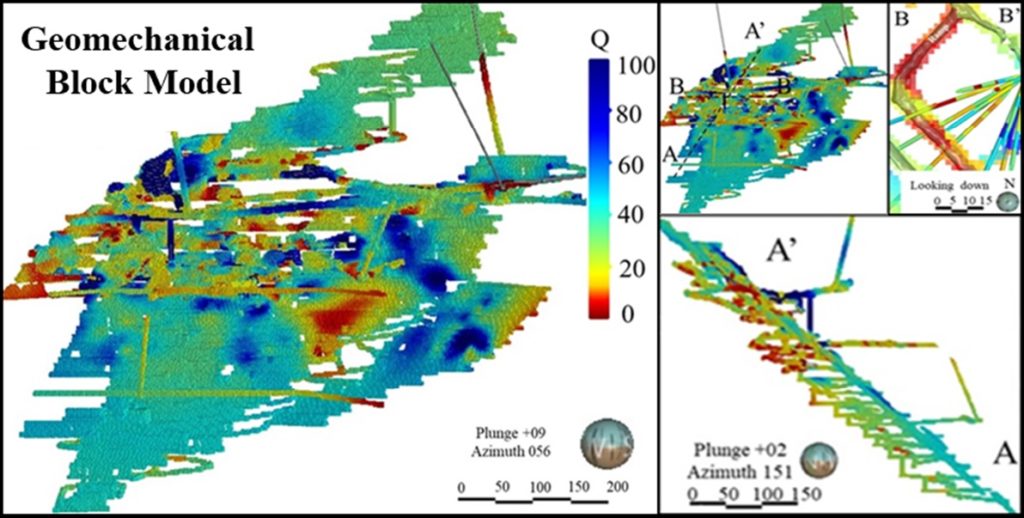
Explains Joao, “We are also automating our data collection. We have wifi in the mine and I can map a face and collect the data and send it straight to our database in the Cloud. And from the Cloud the data comes back ready for us in the shape we need it. Basically, we then just upload it into Leapfrog Geo, the entire process of drawing by hand is over.
The biggest advantage with Implicit modelling is the speed in which you can do everything, it’s not just about the modelling speed but the entire process, how fast you can upload. Leapfrog is directly connected to our entire process because the incorporation of new data happens inside the model. The model is alive, every month there is something new uploaded.
The entire workflow is logging, getting the results aligned in the database, introducing it back to Leapfrog, regenerating the model and then, when the galleries are open, going there and mapping and doing the reconciliation in Leapfrog, which then flows through into our block model. In almost two years I’ve worked here I have updated the models often, to keep up with operations and the mines advances.”


Once finalised the block model is handed over to the mine planning division who design stoping and the development of galleries. This also enables the planning division to provide a monthly assessment with costings. Joao then plots this against his block model and identifies what support system to provide and determines specifications.
The models are also used to assess monthly development plans which is followed by support systems recommendations for each heading in case. It’s important to highlight that at Serra Grande no excavation is open without a geotechnical assessment and recommendation.
Comments Joao, “I am a scientist, at the end of the day I need to receive data, think, generate information and make decisions. With Leapfrog I am able to automate the process and also simulate several different scenarios for the mine, choose the most appropriate for the ground conditions and develop the best support system.”
“Leapfrog is directly connected to our entire process because the incorporation of new data happens inside the model. The model is alive, every month there is something new uploaded.”
João E F Ramires, Geotechnical Geologist, AngloGold Ashanti
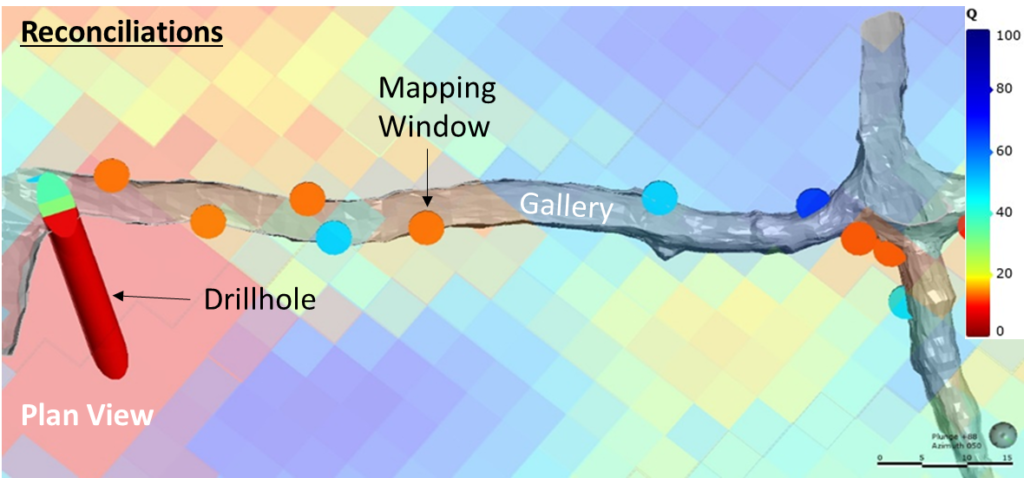
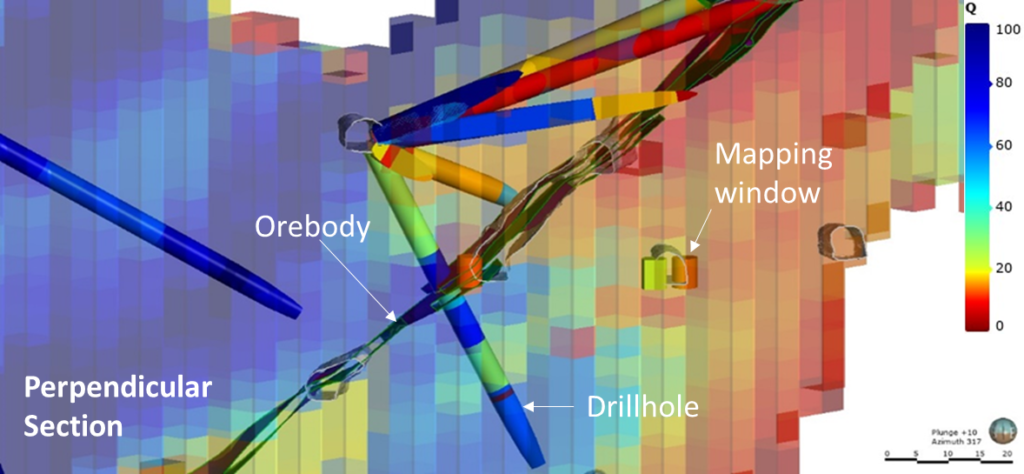
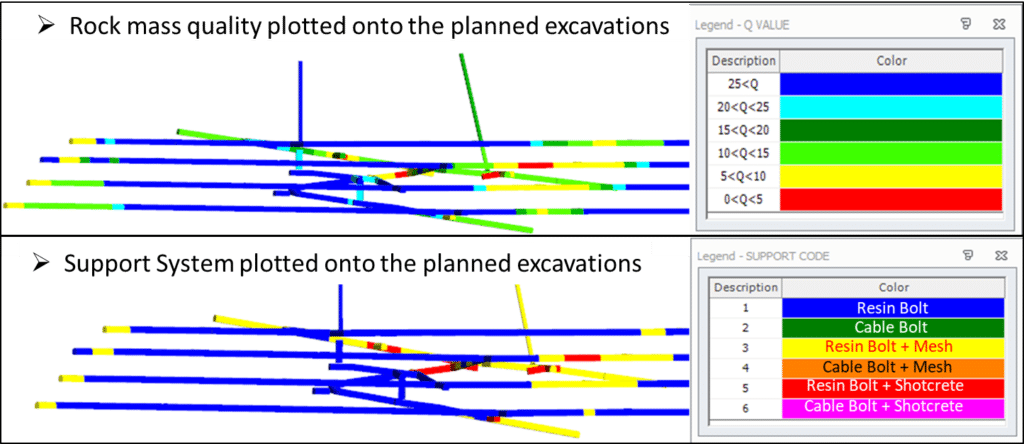
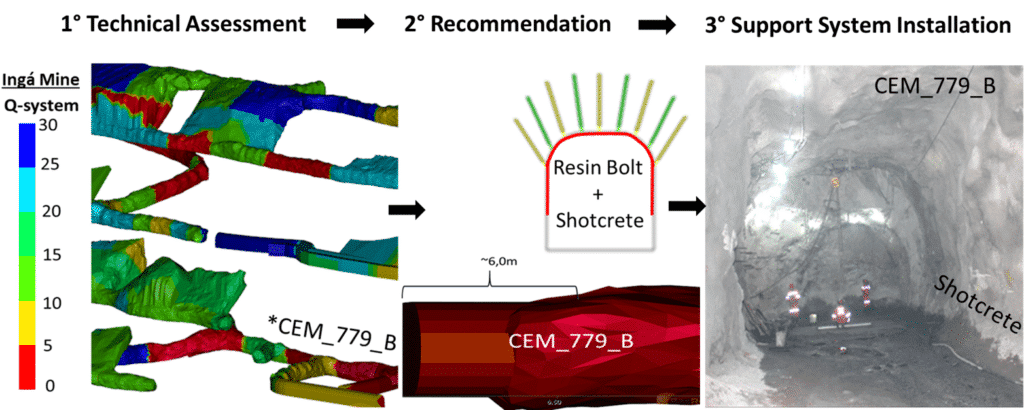
“I am a scientist, at the end of the day I need to receive data, think, generate information and make decisions. With Leapfrog I am able to automate the process and also simulate several different scenarios for the mine, choose the most appropriate for the ground conditions and develop the best support system.”
João E F Ramires, Geotechnical Geologist, AngloGold Ashanti
Outcome
Since the introduction of Leapfrog Geo it has been possible to more accurately plan for safety in Serra Grande on an ongoing basis that keeps pace with mining.
Comments João, “It is not just about cost but about thinking from a safety point of view. AngloGold Ashanti recognise safety to be a much more important issue than cost. I need to ensure we have stable galleries because people will be working down there.”
Concludes João, “At the beginning probably one of the biggest challenges I faced was proving that we could estimate properly. Using Leapfrog we are able to demonstrate this. We can estimate and interpolate the rock mass qualities according to the Q-system from the Norwegian Geotechnical Institute (2015) and then specify the type of support system needed per Q numerical ranges.”
Leapfrog Geo Product Manager, Byron Taylor, comments, “We welcome Leapfrog Geo’s use in the production environment and João’s efforts in introducing it to his workflow where it has helped make Serra Grande mine safer. As mines become deeper and more automised, Leapfrog has an increasing role to play in helping to keep pace with mining and assist in effective decision making at all stages of the mining value chain.”
References
- The GMRi concept was published by “ECF Hamman, DJ du Plooy & JM Seery, 2017”, at the Eighth International Conference on Deep and High Stress Mining.
- Published by Mussucatto as an internal AGA report.
- Published in 2019 at the International Society of Rock Mechanics (ISRM) conference in Rock Mechanics for Natural Resources and Infrastructure Development.





